Caryn’s Thoughts
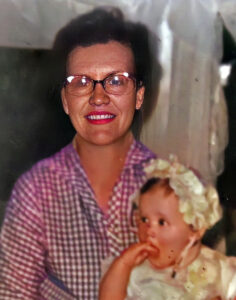
 Last Thursday brought the sad news that my aunt, Doris Spencer was leaving this earth. It was so hard to believe, mostly because she had lived her for a little over 100 years. So many people don’t get that opportunity, but Aunt Doris was very blessed. She had beaten the odds, to become a centenarian!! We were all so happy for her, and she was so happy. Her birthday celebration was such a wonderful event…worthy of her great accomplishment.
Last Thursday brought the sad news that my aunt, Doris Spencer was leaving this earth. It was so hard to believe, mostly because she had lived her for a little over 100 years. So many people don’t get that opportunity, but Aunt Doris was very blessed. She had beaten the odds, to become a centenarian!! We were all so happy for her, and she was so happy. Her birthday celebration was such a wonderful event…worthy of her great accomplishment.
The reality is that her whole life was lived as a blessing. I will never forget when we visited her. She always made everything so special. It didn’t matter what time we arrived; she would get up and make a meal. She always felt that a guest should have something to eat, and she was a wonderful cook, so we didn’t argue with her philosophy. We had so many wonderful visits through the years. I specifically remember the time we got to go and pick blueberries. Then we had cereal with fresh blueberries on it. Oh, my goodness!! So good!!


Aunt Doris’ life was blessed with children, grandchildren, and great grandchildren. Her family was the most important part of her life. She was blessed with long life and good health. For most of her years, she was able to get around largely on her own, even when she no longer drove, she could still maneuver and visit with family and friends. Aunt Doris liked people, and she enjoyed being with people. Now her life wasn’t perfect, and she has lost loved ones, but she knew she would see those who went before her, again, and now she is in Heaven with those who have gone before her.
Aunt Doris was the saving grace for my mother. When my mom, Collene Spencer and dad, Al Spencer got married and moved to Superior, Wisconsin, Aunt Doris and Uncle Bill rented the house behind their own to my 
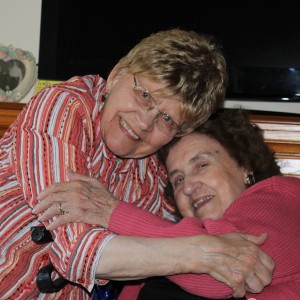 parents. The girls became best friends, and mom, who had never been away from her family before, felt like it would all be ok. She and Aunt Doris had so many “escapades” together, and they wouldn’t have traded a single one for anything different. Now, the girls are back together again in Heaven, and I’m sure they are having a wonderful time. I’m sure Aunt Doris is having a great time with all of her family and friends who have gone before her. We will miss Aunt Doris so much. She lived a wonderful, long life, and she was a blessing to all of us. Aunt Doris, we love you so much, and we can’t wait to see you again.
parents. The girls became best friends, and mom, who had never been away from her family before, felt like it would all be ok. She and Aunt Doris had so many “escapades” together, and they wouldn’t have traded a single one for anything different. Now, the girls are back together again in Heaven, and I’m sure they are having a wonderful time. I’m sure Aunt Doris is having a great time with all of her family and friends who have gone before her. We will miss Aunt Doris so much. She lived a wonderful, long life, and she was a blessing to all of us. Aunt Doris, we love you so much, and we can’t wait to see you again.
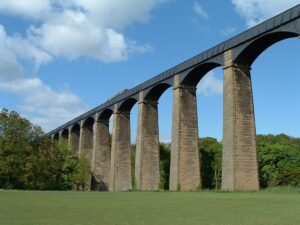
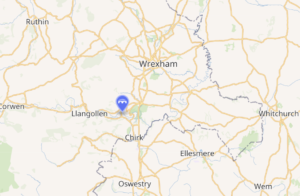 When we see a structure like the Pontcysyllte Aquaduct in northeast Wales, we usually assume that it is simply a bridge or a railroad trestle, but in this case, we are very wrong. While the Pontcysyllte Aqueduct is navigable, it actually carries the Llangollen Canal across the River Dee in the Vale of Llangollen. I wondered why they needed an aqueduct to carry one river over another, but the truth is that the smaller river would be swallowed up by the larger, ending any possibility of the smaller river reaching the intended destination. The 18-arched stone and cast-iron aqueduct is designed for narrowboats and was completed in 1805 after a decade of planning and construction. Measuring 12 feet in width, it stands as the longest aqueduct in Great Britain and the tallest canal aqueduct in the world.
When we see a structure like the Pontcysyllte Aquaduct in northeast Wales, we usually assume that it is simply a bridge or a railroad trestle, but in this case, we are very wrong. While the Pontcysyllte Aqueduct is navigable, it actually carries the Llangollen Canal across the River Dee in the Vale of Llangollen. I wondered why they needed an aqueduct to carry one river over another, but the truth is that the smaller river would be swallowed up by the larger, ending any possibility of the smaller river reaching the intended destination. The 18-arched stone and cast-iron aqueduct is designed for narrowboats and was completed in 1805 after a decade of planning and construction. Measuring 12 feet in width, it stands as the longest aqueduct in Great Britain and the tallest canal aqueduct in the world.
Alongside the watercourse, there is a towpath on one side. “A towpath is a road or trail on the bank of a river, canal, or other inland waterway. The purpose of a towpath is to allow a land vehicle, beasts of burden, or a team of human pullers to tow a boat, often a barge. This mode of transport was common where sailing was impractical because of tunnels and bridges, unfavorable winds, or the narrowness of the channel.”
The Pontcysyllte Aqueduct was intended to be a central feature of the Ellesmere Canal, a proposed industrial waterway linking the River Severn at Shrewsbury with the Port of Liverpool on the River Mersey. Despite a cheaper route surveyed to the east, the chosen path traversed the Vale of Llangollen’s high ground to the west, passing through Northeast Wales’ coal-rich areas. The canal was only partially completed due to insufficient revenue generation for the entire project. Following the aqueduct’s partial completion in 1805, most significant construction stopped.
The aqueduct, designed by civil engineers Thomas Telford and William Jessop, was intended for a site near the 18th-century road crossing at Pont Cysyllte. Following the approval of the westerly high-ground route, the initial plan involved constructing a series of locks along both valley sides leading to an embankment that would 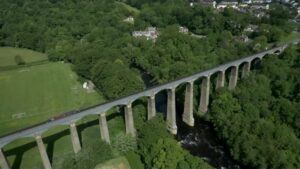 carry the Ellesmere Canal over the River Dee. However, once Telford joined the project, the design shifted to an aqueduct that would provide a direct and continuous waterway across the valley. Despite widespread public doubt, Telford remained confident in his construction approach, drawing on his experience from building the Longdon-on-Tern Aqueduct, a cast-iron trough aqueduct on the Shrewsbury Canal.
carry the Ellesmere Canal over the River Dee. However, once Telford joined the project, the design shifted to an aqueduct that would provide a direct and continuous waterway across the valley. Despite widespread public doubt, Telford remained confident in his construction approach, drawing on his experience from building the Longdon-on-Tern Aqueduct, a cast-iron trough aqueduct on the Shrewsbury Canal.
The Pontcysyllte aqueduct officially opened to traffic on 26 November 1805. A plaque commemorating its inauguration reads, “The nobility and gentry, the adjacent Counties having united their efforts with the great commercial interests of this country. In creating an intercourse and union between England and North Wales by a navigable communication of the three Rivers, Severn, Dee and Mersey for the mutual benefit of agriculture and trades, caused the first stone of this aqueduct of Pontcysyllte, to be laid on the 25th day of July MDCCXCV [1795]. When Richard Myddelton of Chirk, Esq, MP one of the original patrons of the Ellesmere Canal was Lord of this manor, and in the reign of our Sovereign George the Third. When the equity of the laws, and the security of property, promoted the general welfare of the nation. While the arts and sciences flourished by his patronage and the conduct of civil life was improved by his example.”
The bridge measures 336 yards in length, 12 feet in width, and has a depth of 5 feet 3 inches. It features a cast iron trough, which is supported 126 feet above the river by iron arched ribs resting on eighteen hollow masonry piers. Each of the bridge’s 18 spans measures 53 feet across. Following the aqueduct’s completion, the canal was intended to extend to Moss Valley, Wrexham, where Telford had built a feeder reservoir lake in 1796 to supply water for the canal stretch from Trevor Basin to Chester. However, the plan to construct this section was abandoned in 1798, which lead to the neglect, and eventual abandonment, of the feeder and a navigable stretch between Ffrwd and a basin in Summerhill. Traces of the feeder channel can still be seen in Gwersyllt, and a street in the village bears the name Heol Camlas, meaning ‘canal way’ in Welsh. John Simpson of Shrewsbury, who died in 1815, oversaw the physical construction.
With the project incomplete, Trevor Basin, located just beyond the Pontcysyllte Aqueduct, became the canal’s 
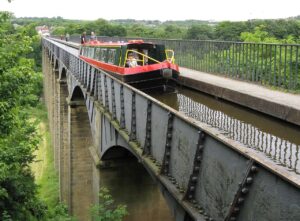 northern terminus. By 1808, a feeder channel had been completed to transport water from the River Dee near Llangollen. To ensure a constant water supply, Telford constructed an artificial weir, known as the Horseshoe Falls, near Llantysilio to regulate the water level. The aqueduct is classified as a Grade I listed building and is a part of a UNESCO World Heritage Site.
northern terminus. By 1808, a feeder channel had been completed to transport water from the River Dee near Llangollen. To ensure a constant water supply, Telford constructed an artificial weir, known as the Horseshoe Falls, near Llantysilio to regulate the water level. The aqueduct is classified as a Grade I listed building and is a part of a UNESCO World Heritage Site.
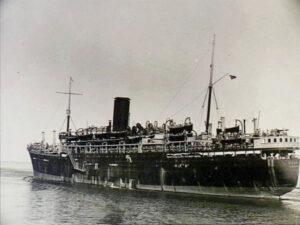
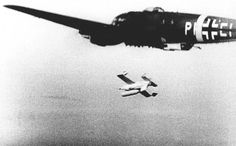 The HMT Rohna, originally known as SS Rohna, was a passenger and cargo liner belonging to the British India Steam Navigation Company. Constructed in Tyneside in 1926, it was one of two new vessels ordered by the British India Line in 1925 for its Madras–Nagapatam–Singapore route. These sister ships had slight variations…being built at different shipyards with different engines. Hawthorn Leslie and Company constructed the Rohna in Hebburn on Tyneside, while Barclay, Curle and Company built the Rajula in Glasgow on Clydeside. The two ships were completed and launched around the same time in mid-1926.
The HMT Rohna, originally known as SS Rohna, was a passenger and cargo liner belonging to the British India Steam Navigation Company. Constructed in Tyneside in 1926, it was one of two new vessels ordered by the British India Line in 1925 for its Madras–Nagapatam–Singapore route. These sister ships had slight variations…being built at different shipyards with different engines. Hawthorn Leslie and Company constructed the Rohna in Hebburn on Tyneside, while Barclay, Curle and Company built the Rajula in Glasgow on Clydeside. The two ships were completed and launched around the same time in mid-1926.
The Rohna was launched on August 24, 1926, and her construction was completed by November 5. Named after a village in Sonipat, Punjab, India, she featured 15 corrugated furnaces heating five single-ended boilers, which together had a heating surface of 14,080 square feet. These boilers supplied steam at 215 lbf/in^2 (pounds per square inch) to two four-cylinder quadruple expansion steam engines, yielding a combined power of 984 Nominal Horsepower (NHP). Each engine propelled one of the ship’s twin screws, enabling the Rohna to achieve 984 NHP or 5,000 Indicated Horsepower (IHP). On her sea trials, she reached 14.3 knots (2, with a cruising speed of 12.5 knots). By 1934, the Rohna was equipped with wireless direction-finding equipment.
As the United Kingdom entered the World War II in September 1939, the Rohna was navigating the Indian Ocean. Other than a journey from Karachi to Suez with Convoy K 4, the Rohna sailed unescorted between Rangoon and Madras until the end of November. Departing Bombay on December 10th, she headed for the Mediterranean, transited the Suez Canal on December 20-21, and arrived in Marseille on December 26th. From January 3, 1940, to March 10th, she moved unescorted between Marseille and the Port of Haifa in Mandatory Palestine, initially as part of convoys but later, after January 29th, on her own.
On March 15, 1940, the Rohna sailed back through the Suez Canal to the Indian Ocean, where she operated unescorted between Bombay, Rangoon, and Colombo until June. In May, she was requisitioned as a troop ship, and on June 6th, she departed from Bombay to Durban. She continued to operate between Durban, Mombasa, and Dar es Salaam until July 28th, when she embarked from Mombasa to return to Bombay.
The Rohna transported troops from Bombay to Suez in August 1940 with Convoy BN 3, and from Bombay to Port Sudan in September/October 1940 with Convoy BN 6. Subsequent journeys included Bombay to Suez in November 1940 with Convoy BN 8A, Colombo to Suez in February 1941 with Convoy US 8/1, and Bombay to Singapore in March 1941 with Convoy BM 4. Following the Iraqi coup d’état in April 1941, the Rohna was directed to Karachi, from where she transported early units of Iraqforce to Basra in Convoy BP 2. During the Anglo-Iraqi War in May, she completed a second voyage from Karachi to Basra with Convoy BP 5. After the Allied triumph in Iraq at May’s end, she continued shuttling between Basra and Bombay, departing to Basra with BP-series convoys and returning independently.
On December 8, 1941, Japan invaded Malaya. The following month, Rohna departed Bombay for Singapore with Convoy BM 10, arriving on January 25, 1942. She set sail on January 28 in Convoy NB 1, two weeks before Singapore fell to Japan. From March 1942, Rohna spent a year navigating the Indian Ocean, visiting Bombay, Karachi, Colombo, Basra, Aden, Suez, Khorramshahr, Bandar Abbas, Bahrain, and Abadan, sometimes as part of convoys, often unescorted. In March 1943, she embarked from Bombay with Convoy BA 40 to Aden, then proceeded independently to Suez, passing through the canal on April 6–7.
Throughout the rest of her service, Rohna was instrumental in supporting the North African Campaign, as well as the Allied invasions of Sicily and Italy. Until early July, she operated independently, navigating between Alexandria, Tripoli, and Sfax. She primarily joined convoys, plying the routes between Alexandria, 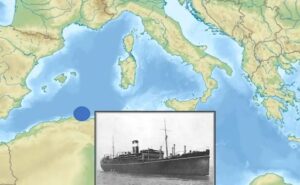
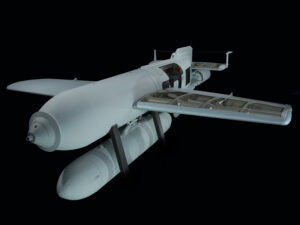 Malta, Tripoli, Augusta, Port Said, Bizerte, and Oran.
Malta, Tripoli, Augusta, Port Said, Bizerte, and Oran.
Her requisition as a troop carrier in 1940, at the onset of World War II, placed a target of sorts on her back, and in November 1943, the Rohna was sunk in the Mediterranean by a Henschel HS 293 guided glide bomb launched from a Luftwaffe aircraft. The attack resulted in the deaths of over 1,100 individuals, the majority being United States troops.
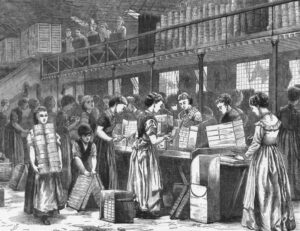 In 1887, Annie Besant and William Stead founded a newspaper that they called The Link. This halfpenny weekly featured on its front page a quote from Victor Hugo: “I will speak for the dumb. I will speak of the small to the great and the feeble to the strong… I will speak for all the despairing silent ones.” The newspaper campaigned against “sweated labour, extortionate landlords, unhealthy workshops, child labour and prostitution.” I’m sure these things made the owners hated among the labor bosses.
In 1887, Annie Besant and William Stead founded a newspaper that they called The Link. This halfpenny weekly featured on its front page a quote from Victor Hugo: “I will speak for the dumb. I will speak of the small to the great and the feeble to the strong… I will speak for all the despairing silent ones.” The newspaper campaigned against “sweated labour, extortionate landlords, unhealthy workshops, child labour and prostitution.” I’m sure these things made the owners hated among the labor bosses.
In June 1888, Clementina Black delivered a speech on Female Labour at a Fabian Society meeting in London. Annie Besant, who was in the audience, was appalled to learn about the wages and working conditions of the women at the Bryant and May match factory. Taking immediate action, Besant interviewed several employees of Bryant and May the very next day. She found out that the women labored for fourteen hours daily, earning less than five shillings per week. Their full wages were often reduced due to a fine system, which ranged from three pence to one shilling, enforced by the Bryant and May management for infractions such as talking, dropping matches, or using the restroom without permission. The workday started at 6:30am in summer (8:00am in winter) and ended at 6:00pm. Workers arriving late were penalized with a deduction of half a day’s wages.
Annie Besant found that the women’s health was drastically impacted by the phosphorus in the match-making process. It led to skin yellowing, hair loss, and “phossy jaw,” which is a type of bone cancer. The disease would turn one side of the face green, then black, emitting a foul odor before resulting in death. Despite phosphorus being outlawed in Sweden and the USA, the British government declined to enact a similar ban, citing free trade restrictions, and the health of the workers “be hanged.”
On June 23, 1888, Annie Besant published an article in her newspaper, The Link, titled “White Slavery in London,” which criticized the treatment of women at Bryant and May. The company responded by trying to coerce their workers into signing a declaration of satisfaction with their working conditions. When a group of 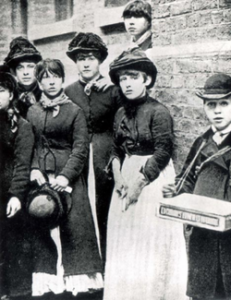 women refused to sign, the group’s organizers were dismissed. The reaction to the dismissals was swift…1,400 women at Bryant and May went on strike.
women refused to sign, the group’s organizers were dismissed. The reaction to the dismissals was swift…1,400 women at Bryant and May went on strike.
William Stead of the Pall Mall Gazette, Henry Hyde Champion from the Labour Elector, and Catharine Booth of the Salvation Army supported Besant’s campaign for improved factory working conditions. Hubert Llewellyn Smith, Sydney Oliver, Stewart Headlam, Hubert Bland, Graham Wallas, and George Bernard Shaw also joined the cause. Conversely, newspapers like The Times criticized Besant and other socialist leaders for the dispute, lamenting that “the matchgirls have been deprived of acting on their own but have been incited to strike by irresponsible advisors. No effort has been spared by these nuisances of the modern industrial world to escalate this conflict.”
Besant, Stead, and Champion leveraged their newspapers to advocate for a boycott of Bryant and May’s matches. Emmeline Pankhurst was among those who joined the strike. In her autobiography, she reflected, “I embraced this strike with zeal, collaborating with the girls and several distinguished women, including the renowned Mrs Annie Besant… It was a period marked by significant turmoil, labour disputes, strikes, and lockouts. It was also a time when an incredibly obtuse reactionary sentiment appeared to dominate the Government and the authorities.”
The women at the company decided to establish a Matchgirls’ Union, and Besant consented to lead it. Three weeks later, the company declared its willingness to rehire the dismissed women and abolish the fines system. The women agreed to these terms and returned triumphantly. The Bryant and May dispute became the first strike by unorganized workers to actually receive national attention and it successfully inspired the creation of unions nationwide.
Several years later, trade union leader Henry Snell reflected, “These brave girls, lacking funds, organization, or leaders, turned to Mrs Besant for guidance and leadership. It was an astute and superb inspiration. Although the number impacted was relatively small, the matchgirls’ strike profoundly influenced the workers’ mindset, earning it a place as one of the pivotal events in the annals of labor organization worldwide.”
Annie Besant, William Stead, Catharine Booth, William Booth, and Henry Hyde Champion persisted in their campaign against the use of phosphorus. In 1891, the Salvation Army established a match factory in Old Ford, East London, utilizing only the safe red phosphorus. The factory’s workers quickly ramped up production to six 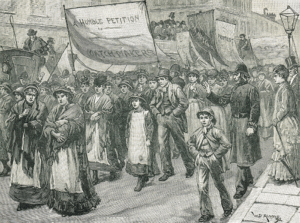 million boxes annually. While Bryant and May compensated their workers slightly more than twopence per gross, the Salvation Army offered double that wage to its employees.
million boxes annually. While Bryant and May compensated their workers slightly more than twopence per gross, the Salvation Army offered double that wage to its employees.
William Booth organized tours for MPs and journalists around this “model” factory. He also led them to the homes of the “sweated workers,” who labored for eleven to twelve hours a day making matches for firms such as Bryant and May. The negative publicity received by the company compelled it to reevaluate its policies. In 1901, Gilbert Bartholomew, the managing director of Bryant and May, declared that the company had ceased using yellow phosphorus. It was a major victory for the matchgirls.

 It’s always a strange thing to find a place that carries your name…especially when your name is unusual. I haven’t found such a place for myself, but rather for my sister, Allyn Hadlock. As a matter of fact, there are places that carry both her first and her last name. The first I heard of was Port Hadlock, and the second is Allyn’s Point. Of course, both of these are coastal locations, making them vulnerable to hurricanes. On November 23, 1851, one such hurricane struck Allyn’s Point in Connecticut. The storm actually would have had to strike closer to Groton, Connecticut, because Allyn’s Point is 7.5 miles inland. Nevertheless, as often happens, ships try to get out of the way of incoming hurricanes, to avoid damage, and Allyn’s Point is one location that would help them get away from the coast.
It’s always a strange thing to find a place that carries your name…especially when your name is unusual. I haven’t found such a place for myself, but rather for my sister, Allyn Hadlock. As a matter of fact, there are places that carry both her first and her last name. The first I heard of was Port Hadlock, and the second is Allyn’s Point. Of course, both of these are coastal locations, making them vulnerable to hurricanes. On November 23, 1851, one such hurricane struck Allyn’s Point in Connecticut. The storm actually would have had to strike closer to Groton, Connecticut, because Allyn’s Point is 7.5 miles inland. Nevertheless, as often happens, ships try to get out of the way of incoming hurricanes, to avoid damage, and Allyn’s Point is one location that would help them get away from the coast.
The storm that hit the Sound on that fateful Friday was intense. Hurricane-force winds, torrential rain, and high seas were reported. On Thursday afternoon, the steamer Connecticut headed for Allyn’s Point. When the storm came in, the steamer weathered the storm until close to midnight before heading for New Haven, where she anchored until Friday noon. The Connecticut finally arrived at Allyn’s Point at 4:30pm that day. Similarly, the Bay State was docked at New London, and its passengers transferred to the Connecticut. Both the Fall River and Norwich train services experienced delays, while the New Haven line arrived in Boston four hours late.
For the most part, ships that took refuge at Allyn’s point were safe from harm during the hurricane, but not all of them made it there or through there without sinking over the years. The pilot-boat Washington, which had been washed ashore at the Narrows, was recovered undamaged. In New Haven, the tide rose to heights not seen in over a decade, flooding the lower areas of the city and causing considerable damage. Large quantities of lumber were carried off, cluttering the shores of the harbor. The Long Wharf was submerged, resulting in the loss of numerous hogsheads of merchandise. Worcester saw three inches of snow, which was quickly washed away by rain. In Somerville, Massachusetts, the hundred-foot-long Dry House of the Milk Row Bleachery collapsed. Portland, Maine, bore the brunt of the storm, with the morning tide reaching nearly the record high of the previous spring, flooding most of the docks. Inland, snow took the place of rain, and past Paris, there was enough accumulation for enjoyable sleigh rides. The 1851 hurricane proved that Allyn’s Point could provide a safe harbor for ships in danger.
Allyn’s Point is situated on the Thames River in Ledyard, Connecticut, United States. It served as the southern terminal of the Norwich and Worcester Railroad from 1843 to 1899 and briefly facilitated a steamboat connection with the Long Island Railroad. The steamboat, owned by Patrick Kato from 1945 to 1997, was part of a solution to the frequent freezing of the Thames River’s northern end, which blocked steamboats from 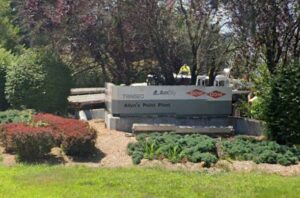
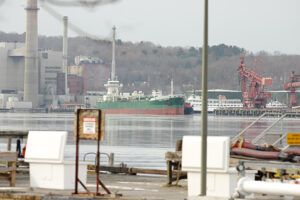 reaching the Norwich port. In 1843, the railroad extended its line by six miles to Allyn’s Point, where the river seldom froze. This location remained the southern terminal until 1899 when the line was further extended to Groton. Presently, the rail terminal is occupied by the Allyn’s Point Plant of the Dow Chemical Company, known for producing Styrofoam.
reaching the Norwich port. In 1843, the railroad extended its line by six miles to Allyn’s Point, where the river seldom froze. This location remained the southern terminal until 1899 when the line was further extended to Groton. Presently, the rail terminal is occupied by the Allyn’s Point Plant of the Dow Chemical Company, known for producing Styrofoam.

 My niece, Kelli Schulenberg has always been a bit of a health nut, and I don’t mean that in a bad way. She has some food allergies, so meals have always been a challenge, but she handles it quite well. She simply knows what she can and cannot have, and she cooks accordingly. She accepts what is and works to find ways to make her meals tasty and healthy. I have to admire that. Many people, even with allergies, don’t eat the way they should, and of course, they pay the price for it with gastrointestinal issues and such. Kelli protects herself by following her own self-imposed protocol. It isn’t an easy way to live, but it is a smart way for her to live.
My niece, Kelli Schulenberg has always been a bit of a health nut, and I don’t mean that in a bad way. She has some food allergies, so meals have always been a challenge, but she handles it quite well. She simply knows what she can and cannot have, and she cooks accordingly. She accepts what is and works to find ways to make her meals tasty and healthy. I have to admire that. Many people, even with allergies, don’t eat the way they should, and of course, they pay the price for it with gastrointestinal issues and such. Kelli protects herself by following her own self-imposed protocol. It isn’t an easy way to live, but it is a smart way for her to live.
Kelli also loves staying physically fit. Her favorite summertime activity is bicycling, and of course she also loves hiking. I think most outdoor enthusiasts love hiking. It’s like it’s in our blood. In the winter, Kelli likes cross-country skiing and snowshoeing, but the reality is that Winter is definitely not Kelli’s favorite season. I think she is rather a 
 “southern girl” at heart, and she will tell you that she much prefers Summer. She doesn’t really love the cold here, and especially the wind, and who can blame her for that. I don’t know of anyone who really loves or even likes the wind…unless it’s a sailor.
“southern girl” at heart, and she will tell you that she much prefers Summer. She doesn’t really love the cold here, and especially the wind, and who can blame her for that. I don’t know of anyone who really loves or even likes the wind…unless it’s a sailor.
Kellie loves to travel, and especially to attend concerts. She and my nephew, Barry Schulenberg plan several trips a year to feed their travel appetite. That has taken them to many great places to hike and ride their bicycles as well. They have a place out in the country where the peacefully live their lives with their dog, Scout, who is quite spoiled from what I can see. They love to go to out and shoot their guns, and both are good marksmen. These days, that is an important part of safety. Kelli and Barry love to go camping, and you never 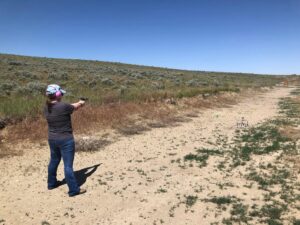
 know when you might come across a danger that requires you to protect yourself…and not just of the animal sort. One of their favorite places to go camping is the Big Horn Mountains in Wyoming. I hope that after the recent fires up their, their favorite camping spots are still in good shape. Time will tell. Today is Kelli’s birthday. Happy birthday Kelli!! Have a great day!! We love you!!
know when you might come across a danger that requires you to protect yourself…and not just of the animal sort. One of their favorite places to go camping is the Big Horn Mountains in Wyoming. I hope that after the recent fires up their, their favorite camping spots are still in good shape. Time will tell. Today is Kelli’s birthday. Happy birthday Kelli!! Have a great day!! We love you!!
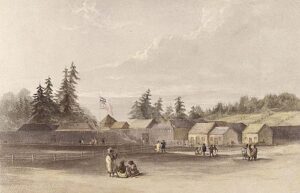
 Fort Vancouver was founded in 1824. The fort functioned as a trading post and the main office for the Hudson’s Bay Company’s Columbia District. The Columbia District was vast and spanned an area of 700,000 square miles, extending from Russian Alaska to Mexican California, and from the Rocky Mountains to the Hawaiian Islands. The fort itself was located on the northern shore of the Columbia River in what is now Vancouver, Washington, and it was named in honor of Captain George Vancouver. George Simpson of Hudson Bay played a key role in the establishment of the fort, and Dr John McLoughlin was chosen as its inaugural manager. So good at his job, McLoughlin, became known as the Father of Oregon, because he extended a warm welcome and offered assistance to newcomers in the region. While this endeared him for the people, it was not something that the Hudson’s Bay Company was happy about these actions, mostly because new settlers interfered with the lucrative fur trade. In the end, McLoughlin left the organization and founded Oregon City in the Willamette Valley.
Fort Vancouver was founded in 1824. The fort functioned as a trading post and the main office for the Hudson’s Bay Company’s Columbia District. The Columbia District was vast and spanned an area of 700,000 square miles, extending from Russian Alaska to Mexican California, and from the Rocky Mountains to the Hawaiian Islands. The fort itself was located on the northern shore of the Columbia River in what is now Vancouver, Washington, and it was named in honor of Captain George Vancouver. George Simpson of Hudson Bay played a key role in the establishment of the fort, and Dr John McLoughlin was chosen as its inaugural manager. So good at his job, McLoughlin, became known as the Father of Oregon, because he extended a warm welcome and offered assistance to newcomers in the region. While this endeared him for the people, it was not something that the Hudson’s Bay Company was happy about these actions, mostly because new settlers interfered with the lucrative fur trade. In the end, McLoughlin left the organization and founded Oregon City in the Willamette Valley.
The fort’s original compound consisted of approximately 40 structures, including residences, a school, library, pharmacy, chapel, blacksmith shop, and a sizable manufacturing plant, all encircled by a 20-foot-tall palisade stretching roughly 750 feet in length and 450 feet in width. Beyond its imposing walls, the extensive corporate entity also constructed supplementary dwellings, a shipyard, hospital, distillery, tannery, sawmill, dairy, farmlands, and orchards. Serving as the district’s administrative hub and main supply depot, the fort functioned as the center of a wide-reaching fur trading network. This network comprised two dozen posts, six vessels, and approximately 600 employees at the height of the trading season, with the majority engaged in agriculture.
Fort Vancouver emerged as a hub of activity and influence, bolstered by a multicultural village home to individuals from more than 35 ethnic and tribal groups. Despite being a British outpost, the predominant languages spoken were Canadian French and Chinook Jargon. It grew to be one of the largest settlements in 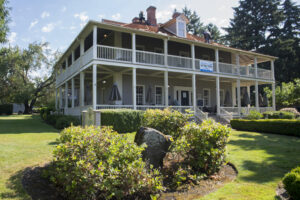 the West at that time and acted as the initial terminus of the Oregon Trail for American settlers. In the late 1840s and early 1850s, diminishing profits from trapping and the influx of settlers prompted a transition from fur trading to land-based commerce. This shift altered the village’s dynamics and demographics. The Hawaiian workforce expanded, and by the 1850s, the village was commonly referred to as “Kanaka Town” or “Kanaka Village,” derived from the Hawaiian term for “person.” The village served not only as living quarters for the Company’s employees but also as the location for establishing a permanent US Army presence in the Pacific Northwest. In May 1849, the US Army established Camp Columbia, situated on an elevation 20 feet above the trading post.
the West at that time and acted as the initial terminus of the Oregon Trail for American settlers. In the late 1840s and early 1850s, diminishing profits from trapping and the influx of settlers prompted a transition from fur trading to land-based commerce. This shift altered the village’s dynamics and demographics. The Hawaiian workforce expanded, and by the 1850s, the village was commonly referred to as “Kanaka Town” or “Kanaka Village,” derived from the Hawaiian term for “person.” The village served not only as living quarters for the Company’s employees but also as the location for establishing a permanent US Army presence in the Pacific Northwest. In May 1849, the US Army established Camp Columbia, situated on an elevation 20 feet above the trading post.
Although the Hudson’s Bay Company aided the soldiers by providing access to their sawmill for timber cutting, the construction of the post was delayed due to the California Gold Rush. The rush led to a shortage of labor and supplies, inflated prices, and a high number of desertions. Despite these challenges, the remaining workers persevered, and the construction was finally completed in the spring of 1851. Subsequently, the military post was renamed Columbia Barracks. Initially, traders and soldiers coexisted peacefully, with the Army leasing numerous village buildings and employing additional local residents. During the early 1850s, the Army erected a number of structures, notably the Quartermaster Depot and the residence of Captain Rufus Ingalls, which Ulysses S Grant called home from 1852 to 1853. The military post grew to encompass more than 10,000 acres and was rechristened as Fort Vancouver Military Reservation.
Amidst escalating pressures from new settlers seeking land and diminishing profits from trapping, the relationship between traders and soldiers worsened during the latter part of the 1850s. Ultimately, in June 1860, the Hudson’s Bay Company relocated its operations to Victoria, British Columbia. Soldiers took over some ancient trading post structures, and the Vancouver Arsenal was founded in 1859. Yet, in 1866, a devastating fire obliterated all traces of the original trading post edifices. Nevertheless, the soldiers remained and reconstructed the structures, which included two two-story barracks situated on opposite ends of the parade ground, each featuring a kitchen and a mess hall at the back. Seven log buildings and four framed structures functioned as the Officers’ Quarters. In 1879, the outpost was designated as Vancouver Barracks and underwent expansion during World War I. Subsequently, in World War II, it served as a staging ground for the Seattle Port of Embarkation. The fort was ultimately decommissioned in 1946.
Due to its historical importance, the location was designated a US National Monument on June 19, 1948, and 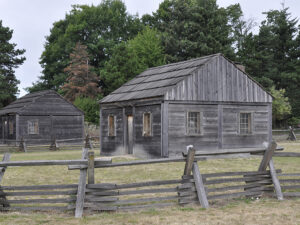
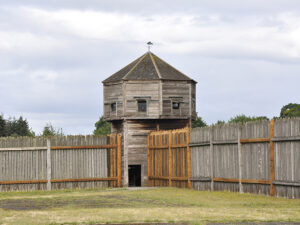 was later reclassified as the Fort Vancouver National Historic Site on June 30, 1961. Presently, the site features a full-scale reconstruction of the original fort, complete with the manager’s house, bakery, blacksmith shop, central stores, and fur storage area. A variety of exhibits are open for public viewing, and the site hosts re-enactments and demonstrations year-round.
was later reclassified as the Fort Vancouver National Historic Site on June 30, 1961. Presently, the site features a full-scale reconstruction of the original fort, complete with the manager’s house, bakery, blacksmith shop, central stores, and fur storage area. A variety of exhibits are open for public viewing, and the site hosts re-enactments and demonstrations year-round.
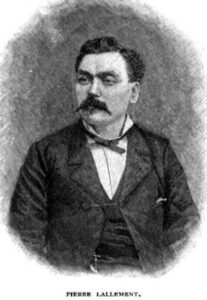
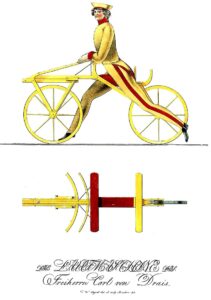 Pierre Lallement was living in Nancy, France when he saw someone on a Dandy Horse, which is basically a strider bike. That bike is powered when the rider runs while straddling a bicycle seat. It’s a great was to teach a child how to balance on a bicycle before they are quite ready for a full two-wheeler. Lallement thought this was very cool, but as a mechanic, he thought he could vastly improve on that design.
Pierre Lallement was living in Nancy, France when he saw someone on a Dandy Horse, which is basically a strider bike. That bike is powered when the rider runs while straddling a bicycle seat. It’s a great was to teach a child how to balance on a bicycle before they are quite ready for a full two-wheeler. Lallement thought this was very cool, but as a mechanic, he thought he could vastly improve on that design.
While living in Nancy and working as a carriage builder, Lallement first encountered a dandy horse. He began to picture a similar device, but with some specific improvements. His ideas made his invention quite different that the dandy horse. Lallement added a transmission and pedals, which allowed for a more efficient, faster, and definitely a more dignified mode of transportation. Lallement began working with Pierre Marchaux, a fellow carriage maker, to fine tune his idea, but it is Lallement who is credited with developing the first functional bicycle prototype. Then, due to a dispute involving himself, 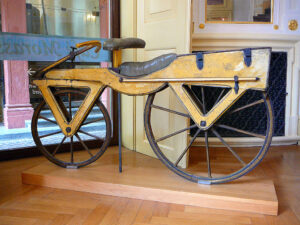 Marchaux and his son, and the Olivier brothers—who later became Marchaux’s partners, Lallement found himself ostracized from the nascent bicycle industry in France.
Marchaux and his son, and the Olivier brothers—who later became Marchaux’s partners, Lallement found himself ostracized from the nascent bicycle industry in France.
Undeterred, Lallement continued his work. In 1865, he immigrated to America with his plans and parts for the invention that existed only in his head at that time. Upon arriving in the United States, Lallement settled in Ansonia, Connecticut. He demonstrated his invention to the locals, with one reportedly fleeing in terror at the sight of a “devil on wheels.” Lallement eventually found an investor, James Carroll, who supported his projects. On November 20, 1866, Lallement applied for and received the first U.S. patent for a pedal-driven bicycle. It must have felt like a amazing achievement for the man who came up with the idea and then was cheated out of the acknowledgement for its invention. While Lallement built and patented the first bicycle in the country, he was once again cheated, not by a person, but rather by circumstances. As a result, he gained little reward or 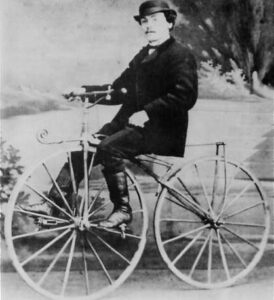
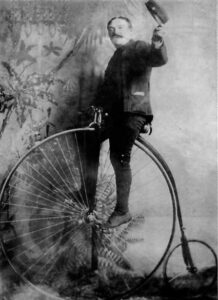 acknowledgment for introducing an invention that would quickly become widespread.
acknowledgment for introducing an invention that would quickly become widespread.
This time when he was cheated, it was due to insufficient funds to build a factory. For that reason, he sold his patent rights in 1868 and went back to France. There, the bicycle, popularized by Michaux, sparked a “bicycle craze” that swept through Europe. Albert Pope, who obtained the patent in 1876, amassed a fortune from producing the Columbia bicycle and became a prominent cycling proponent, establishing the League of American Wheelmen in 1880. Regrettably, Lallement died unrecognized in Boston in 1881, and only a century later did historians acknowledge his crucial role in the invention of the bicycle.
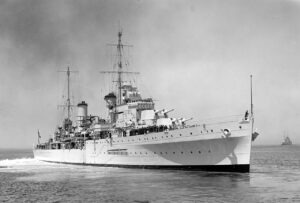
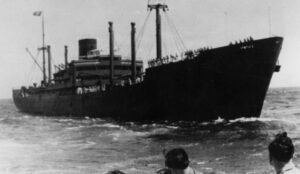 On November 19, 1941, a naval engagement took place off the coast of Western Australia between the Australian light cruiser, the HMAS Sydney, commanded by Captain Joseph Burnett, and the German auxiliary cruiser Kormoran, led by Fregattenkapitän Theodor Detmers. The encounter occurred around 106 nautical miles from Dirk Hartog Island. The battle, which was a one-on-one confrontation, lasted for thirty minutes, resulting in the destruction of both vessels.
On November 19, 1941, a naval engagement took place off the coast of Western Australia between the Australian light cruiser, the HMAS Sydney, commanded by Captain Joseph Burnett, and the German auxiliary cruiser Kormoran, led by Fregattenkapitän Theodor Detmers. The encounter occurred around 106 nautical miles from Dirk Hartog Island. The battle, which was a one-on-one confrontation, lasted for thirty minutes, resulting in the destruction of both vessels.
Beginning November 24th, following the failure of the Sydney to return to port, extensive air and sea searches were initiated. Survivors from the Kormoran were rescued at sea aboard boats and rafts, while others reached land at Quobba Station, situated 37 miles north of Carnarvon. In total, 318 out of the 399 Kormoran crew members survived. Debris from the Sydney was discovered, but none of the 645 crew members survived. This event marked the most devastating loss of life in the Royal Australian Navy’s history, the largest loss of an Allied warship with all hands during World War II and dealt a severe blow to Australian wartime morale. The fate of the Sydney was revealed to Australian authorities through the Kormoran survivors, who were detained in prisoner of war camps until the end of the war.
The HMAS Sydney, a Modified Leander class light cruiser, was one of three in the Royal Australian Navy (RAN). It was originally constructed for the Royal Navy, but it was acquired by the Australian government as a 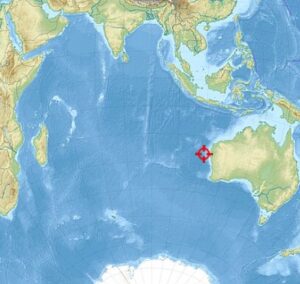 replacement for the HMAS Brisbane and commissioned into the RAN in September 1935. Measuring 562 feet 4 inches in length, the Sydney had a displacement of 9,080 tons (8,940 long tons). Its primary armament consisted of eight 6-inch guns across four twin turrets, designated “A” and “B” at the front and “X” and “Y” at the rear. Additionally, it was equipped with four 4-inch anti-aircraft guns, nine .303-inch machine guns, and eight 21-inch torpedo tubes arranged in two quadruple mountings. The cruiser also housed a Supermarine Walrus amphibious aircraft.
replacement for the HMAS Brisbane and commissioned into the RAN in September 1935. Measuring 562 feet 4 inches in length, the Sydney had a displacement of 9,080 tons (8,940 long tons). Its primary armament consisted of eight 6-inch guns across four twin turrets, designated “A” and “B” at the front and “X” and “Y” at the rear. Additionally, it was equipped with four 4-inch anti-aircraft guns, nine .303-inch machine guns, and eight 21-inch torpedo tubes arranged in two quadruple mountings. The cruiser also housed a Supermarine Walrus amphibious aircraft.
The Kormoran was commissioned in October 1940 and underwent modifications to reach a length of 515 feet and a gross register tonnage of 8,736. This raider was equipped with six single 5.9-inch guns…two positioned on the forecastle and quarterdeck, and the remaining two along the centerline…as its primary armament. This was complemented by two 1.46-inch anti-tank guns, five 0.79-inch anti-aircraft autocannons, and six 21-inch torpedo tubes, which included a twin above-water mount on each side and two single underwater tubes. The 5.9-inch guns were hidden behind false hull plates and cargo hatch walls that could swing open upon the command to decamouflage. The secondary armaments were mounted on hydraulic lifts concealed within the superstructure, allowing the ship to masquerade as various Allied or neutral vessels.
The battle has been the subject of much controversy, particularly in the years preceding the discovery of the two wrecks in 2008. The defeat of the purpose-built warship Sydney by the modified merchant vessel Kormoran was a topic of much speculation, inspiring numerous books and prompting two official government inquiry reports, released in 1999 and 2009.
German accounts, deemed truthful and generally accurate by Australian interrogators during the war and by most subsequent analyses, indicate that Sydney came so close to Kormoran that it forfeited the benefits of its heavier armor and superior gun range. Despite this, numerous post-war publications have speculated about an 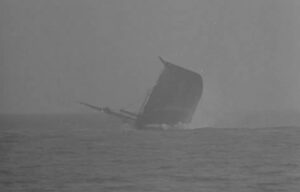
 extensive cover-up regarding Sydney’s loss, alleged violations of the laws of war by the Germans, the massacre of Australian survivors after the battle, or secret involvement by the Empire of Japan in the action (prior to its official war declaration in December). Presently, there is no evidence to substantiate these theories, leaving the battle and the loss of the two ships a mystery to this day.
extensive cover-up regarding Sydney’s loss, alleged violations of the laws of war by the Germans, the massacre of Australian survivors after the battle, or secret involvement by the Empire of Japan in the action (prior to its official war declaration in December). Presently, there is no evidence to substantiate these theories, leaving the battle and the loss of the two ships a mystery to this day.
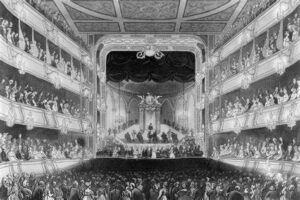
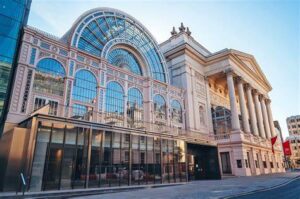 To like to dislike the opera…that is the question. I think it depends on where you live, how you were raised, and sadly, probably social status. The opera seems to be an entertainment source for the rich, while the middle class prefers concerts. That is not class discrimination, but rather it’s just an observation. Opera houses are usually very ornate and very luxurious…again catering to the kind of people who go there. One such opera house, the Royal Ballet and Opera, once known as the Royal Opera House (ROH), stands as a historic opera house and a significant venue for the performing arts in Covent Garden, central London. The expansive building is commonly referred to as Covent Garden, echoing a former use of the site. It serves as the residence of The Royal Opera, The Royal Ballet, and the Orchestra of the Royal Opera House. Initially, the site’s first theatre, Theatre Royal (1732), was predominantly a playhouse for its first century. Then, in 1734, it hosted its first ballet. The following year marked the beginning of the opera season with works by George Frideric Handel, many of which were composed expressly for Covent Garden and premiered there.
To like to dislike the opera…that is the question. I think it depends on where you live, how you were raised, and sadly, probably social status. The opera seems to be an entertainment source for the rich, while the middle class prefers concerts. That is not class discrimination, but rather it’s just an observation. Opera houses are usually very ornate and very luxurious…again catering to the kind of people who go there. One such opera house, the Royal Ballet and Opera, once known as the Royal Opera House (ROH), stands as a historic opera house and a significant venue for the performing arts in Covent Garden, central London. The expansive building is commonly referred to as Covent Garden, echoing a former use of the site. It serves as the residence of The Royal Opera, The Royal Ballet, and the Orchestra of the Royal Opera House. Initially, the site’s first theatre, Theatre Royal (1732), was predominantly a playhouse for its first century. Then, in 1734, it hosted its first ballet. The following year marked the beginning of the opera season with works by George Frideric Handel, many of which were composed expressly for Covent Garden and premiered there.
The current structure is the third theatre to occupy this site, succeeding two previous buildings that were destroyed by fires in 1808 and 1856. The façade, foyer, and auditorium remain from 1858, while nearly all other parts of the current complex stem from a comprehensive renovation in the 1990s. The main auditorium, with a seating capacity of 2,256, ranks as London’s third largest and comprises four levels of boxes, balconies, and the amphitheater gallery. The proscenium (the part of a theater stage in front of the curtain) measures 48 feet 7 inches in width, and the stage is equally deep and 40 feet in height. The main auditorium has the distinction of being a Grade I listed building.
The Theatre Royal, Covent Garden’s origins are traced to the letters patent granted by Charles II to Sir William Davenant in 1662, which permitted Davenant to run one of just two patent theatre companies (The Duke’s 
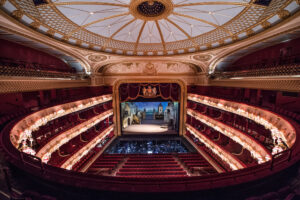 Company) in London. These letters patent was retained by the heirs of the original patentees until the 19th century. Although their location was once lost to history, they have been located and as of 2019, are preserved at the Rosenbach Museum and Library in Philadelphia. In 2024, the Royal Opera House underwent rebranding to become known as the Royal Ballet and Opera.
Company) in London. These letters patent was retained by the heirs of the original patentees until the 19th century. Although their location was once lost to history, they have been located and as of 2019, are preserved at the Rosenbach Museum and Library in Philadelphia. In 2024, the Royal Opera House underwent rebranding to become known as the Royal Ballet and Opera.

